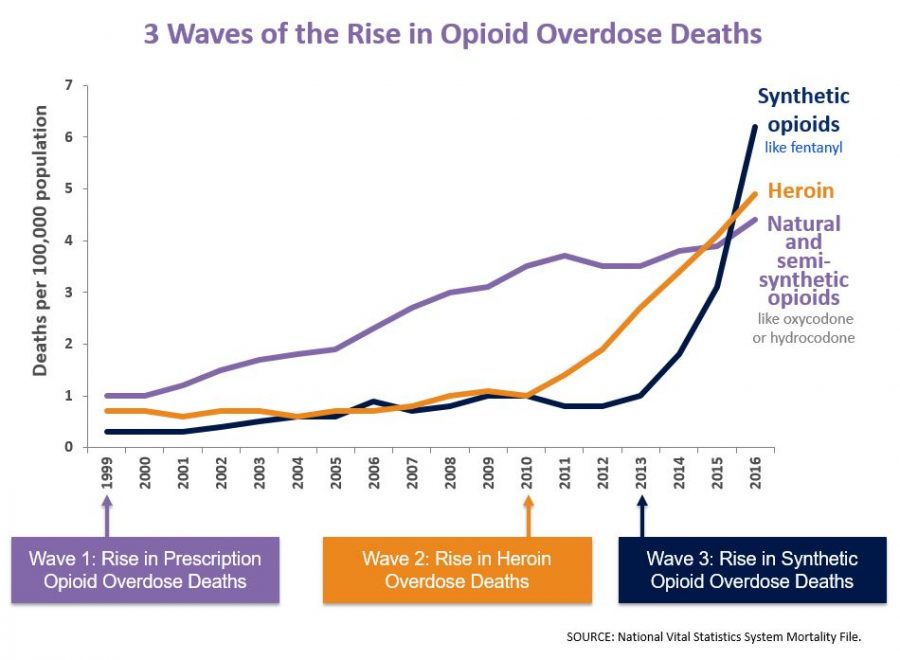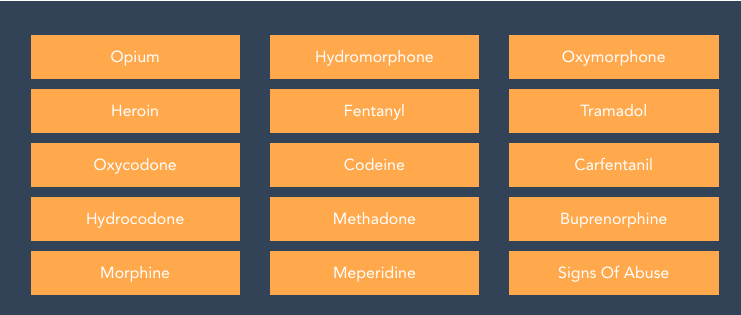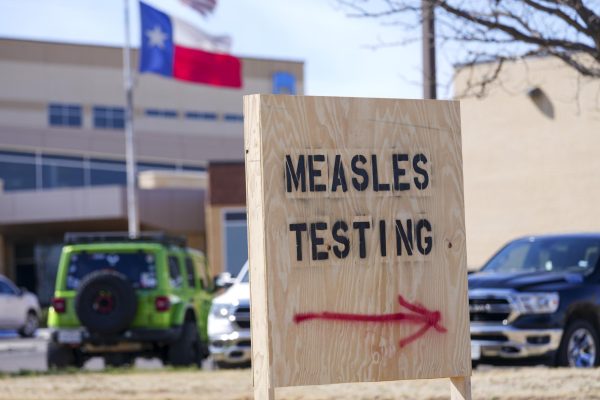Drugs, the brain, and a crisis: The Science of Addiction
In 2016, there were 1,186 opioid-related overdose deaths in Tennessee—a rate of 18.1 deaths per 100,000 persons—higher than the national rate of 13.3 deaths per 100,000 persons.
Understanding a crisis that is as wide spread as the growing Opioid Crisis is difficult for someone who as never taken, much less seen an example of what qualifies as a drug of the classification. A drug that kills “every day, more than 115 Americans after taking and overdosing on opioids.”
Drug overdose deaths continue to increase in the United States.
- From 1999 to 2016, more than 630,000 people have died from a drug overdose.
- Around 66% of the more than 63,600 drug overdose deaths in 2016 involved an opioid.
- In 2016, the number of overdose deaths involving opioids (including prescription opioids and illegal opioids like heroin and illicitly manufactured fentanyl) was 5 times higher than in 1999.
- On average, 115 Americans die every day from an opioid overdose.1

In order to help Hillsboro High School students better understand exactly what is in crisis in America, the Academy of Health Sciences hosted a guest speaker, Danny Windor, from the Winder Lab, which is a lab that studies drug abuse and addiction at the Winder Lab Molecular Physiology & Biophysics and Vanderbilt Brain Institute a department within the Vanderbilt School of Medicine.
Dr. Danny Winder explains spoke to students and teachers recently about what actually happens to one’s brain when a person is overdosing on an opioid. First he explained that these kinds of narcotics are extremely addictive. Dr. Winder explained how the opioid crisis developed.
Opioids are not a new drug, what is new in the last 30-40 years is how these drugs have been prescribed by physicians. Heroin, an opiate, has been around for centuries, however, it is the increase in synthetic opiates is on the rise, and if not curbed, America is set to the equivalent of the entire population of Nashville in less than 10 years.
In the late 1990s, big pharmaceutical companies created, presented research and reassured that physicians in the medical community that they had developed new synthetic painkillers that mimicked their organic brothers but without the addictive side effects.
“Over the past couple of decades, the health care system, bolstered by pharmaceutical companies, flooded the US with opioid painkillers. Then illicit drug traffickers followed suit, inundating the country with heroin and other illegally produced opioids, particularly fentanyl, that people could use once they ran out of painkillers or wanted something stronger. All of this made it very easy to obtain and misuse drugs.”2
 Mehta, Rupal B. (CDC/ONDIEH/NCIPC)
Mehta, Rupal B. (CDC/ONDIEH/NCIPC)
Unfortunately,many patients who were prescribed opioids became addicted much more quickly than predicted to the euphoria produced by the drugs. Pharmaceutical sales incentives encouraged physicians to prescribe these drugs even more at higher rates. People when they become addicted they tend to use the drug more than when prescribed to them, and this is an issue because it kills them.
What is a drug addiction?
 The National Institute on Drug Abuse defines addiction as a “chronic, relapsing brain disease that is characterized by compulsive drug seeking and use, despite harmful consequences.† It is considered a brain disease because drugs change the brain—they change its structure and how it works. These brain changes can be long-lasting, and can lead to the harmful behaviors seen in people who abuse drugs.”3
The National Institute on Drug Abuse defines addiction as a “chronic, relapsing brain disease that is characterized by compulsive drug seeking and use, despite harmful consequences.† It is considered a brain disease because drugs change the brain—they change its structure and how it works. These brain changes can be long-lasting, and can lead to the harmful behaviors seen in people who abuse drugs.”3
Why do people take drugs?
In general, people begin taking drugs for a variety of reasons:
- To feel good. Most abused drugs produce intense feelings of pleasure. This initial sensation of euphoria is followed by other effects, which differ with the type of drug used. For example, with stimulants such as cocaine, the “high” is followed by feelings of power, self-confidence, and increased energy. In contrast, the euphoria caused by opiates such as heroin is followed by feelings of relaxation and satisfaction.
- To feel better. Some people who suffer from social anxiety, stress-related disorders, and depression begin abusing drugs in an attempt to lessen feelings of distress. Stress can play a major role in beginning drug use, continuing drug abuse, or relapse in patients recovering from addiction.
- To do better. Some people feel pressure to chemically enhance or improve their cognitive or athletic performance, which can play a role in initial experimentation and continued abuse of drugs such as prescription stimulants or anabolic/androgenic steroids.
- Curiosity and “because others are doing it.” In this respect adolescents are particularly vulnerable because of the strong influence of peer pressure. Teens are more likely than adults to engage in risky or daring behaviors to impress their friends and express their independence from parental and social rules.4
If taking drugs makes people feel good or better, what’s the problem?
If the drugs make feel better faster, why are they a problem? Dr. Winder’s lab in the Vanderbilt Brain Clinic studies how the brain is changed on a molecular, physiological and biophysical level. ” Increasingly, addiction is understood as a long-lasting change in brain function outlasting withdrawal…Relapse driven by learned associations (cue, context) as well as by mental state transitions (stress, anxiety) can occur long after obvious negative consequences of cessation of drug intake have stopped. Thus, intense focus is being placed on neural mechanisms driving drug “craving” sensation and initiation of relapse to intake after extinction. Our lab takes a combination of brain slice electrophysiological and biochemical approaches coupled with behavioral analysis in mice to begin to determine the lasting changes produced by drugs of abuse that induce relapse behavior.”5
“In 2016, there were 1,186 opioid-related overdose deaths in Tennessee—a rate of 18.1 deaths per 100,000 persons—higher than the national rate of 13.3 deaths per 100,000 persons.
Deaths from heroin overdose have increased since 2010 from 17 to 260 deaths. Deaths from synthetic and prescription opioids have also increased, from 72 to 395 deaths and from 516 to 739 deaths, respectively.” The United States is in the midst of an opioid overdose epidemic, killed more than 42,000 people in 2016, more than any year on record. 40% of all opioid overdose deaths involve a prescription opioid.
Learning from a health care professional who studies the actual molecular changes the brain made a large impact on the audience. Students we moved to keep discussing the subject long after the presentation was over. It is that interest that prompted the Hillsboro Globe to provide this information.
Below is a list of the controlled substances that are considered an Opioid. See one of our AGHS teachers (Dr. Fisher-Jackson, Ms. Thomas, and Ms. Nelson) to learn more about opioids or check out one of the websites below.

- Center for Disease Control: https://www.cdc.gov/drugoverdose/epidemic/index.html
- German Lopez: https://www.vox.com/science-and-health/2017/8/3/16079772/opioid-epidemic-drug-overdoses
- NIDA: https://www.drugabuse.gov/publications/drugs-brains-behavior-science-addiction/drug-abuse-addiction
- NIDA: https://www.drugabuse.gov/publications/drugs-brains-behavior-science-addiction/drug-abuse-addiction
- Winder Lab: https://medschool.vanderbilt.edu/winder-lab/











